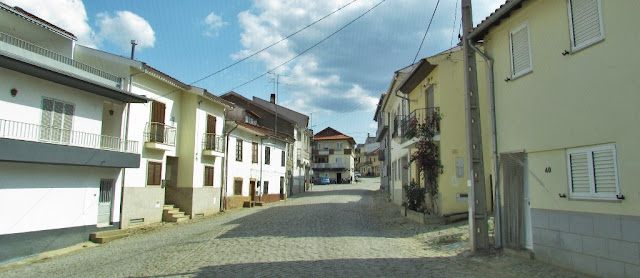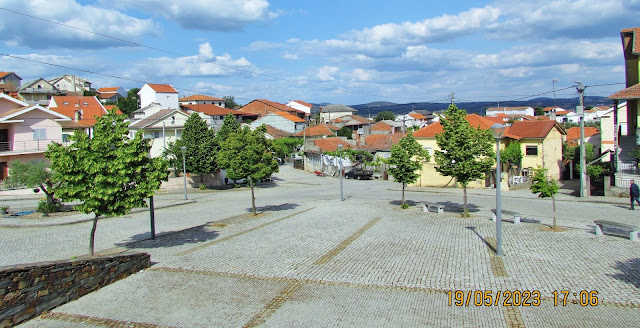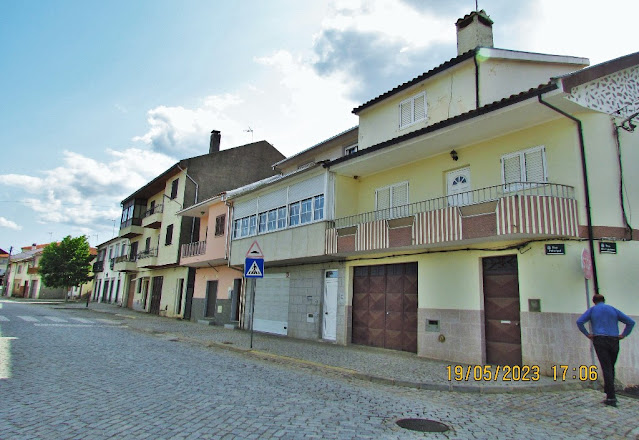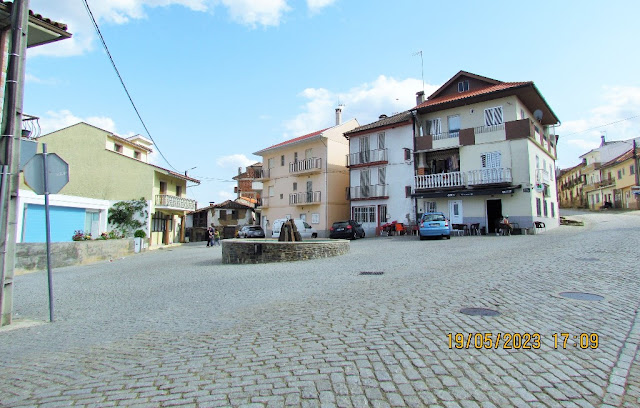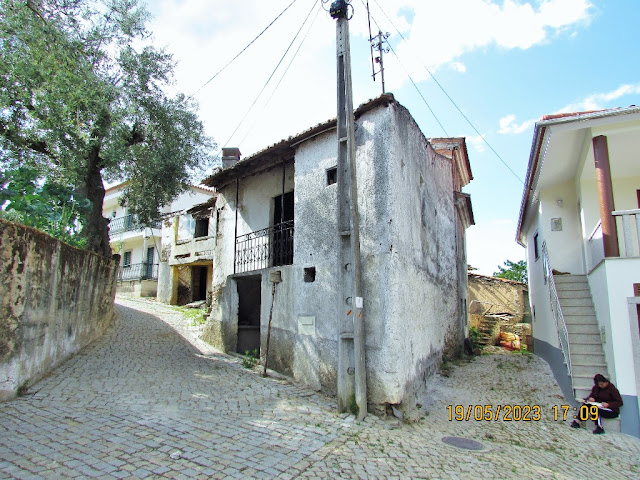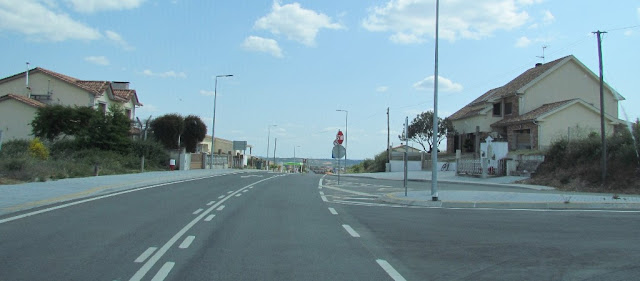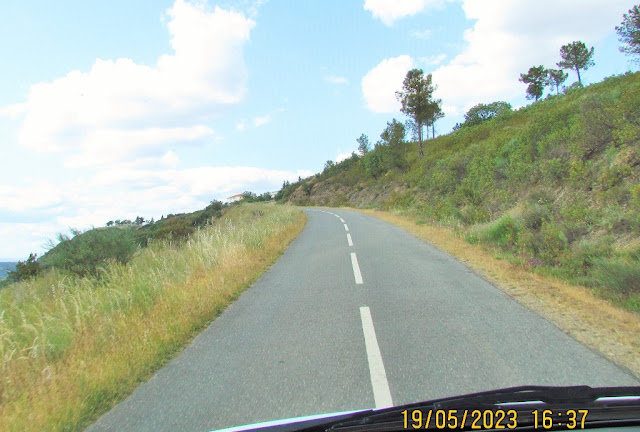ARGOZELO
N 41.64762º; W 6.60409º
Argozelo is a Portuguese village and parish in the municipality of Vimioso, with an area of 29.55 km² and 560 inhabitants (2021). Its population density is 19 inhabitants/km².
Argozelo was elevated to town status on July 12, 2001. It is located approximately 18 km from Vimioso, seat of the municipality, 26 km from Bragança and 13 km from the IP4 that connects Bragança to Spain (municipality of Alcanizes and province of Zamora).
Village of Argoselo or Argozelo
Being one of the largest villages in the district of Bragança with outstanding economic activity, Argozelo became a village in 2001.
Archeology and history
This locality has been populated at least since the beginning of the Middle Ages, judging by the written documentation. The first inhabitants may have arrived, however, much earlier. There are legends that point in this direction, because there are traces that may prove to be prehistoric after deeper archaeological studies. On the slopes of the river Sabor, in the place called Covas do Teixo, there are two strongholds called by the people Buraco de Fumo and Sala Assombrada. It is said that Paleolithic man lived here. In addition, four axes from the Neolithic period were found at the end of the parish, a copper fragment and a bronze one. All these vestiges are currently in Bragança.
The first parish church was built around the 12th or 13th century. Of small dimensions, it will have been demolished and replaced by another one, larger, erected in a central place of the parish that, since the Middle Ages, had grown a lot.
Economic activities
The parish of Argozelo is markedly rural. Agriculture, olive growing, viniculture and the production of almonds and cork make up the main activities of the population, which is also dedicated to civil construction, locksmithing and the wood processing industry.
Handicrafts from Argoselo are very much alive in the parish. Tinkers, harness makers, tanneries, tailoring, tinwork, lace and embroidery continue to feed the tradition.
Exploration of tungsten
There was mining until 1986, but the tungsten and tin mines are currently deactivated.
Initially in the open air, with direct washing in the small stream that ran through what is now Prado, later using shallow galleries that can still be seen in some properties. The plateau that starts from the Sabor valley in the extension of the São Bartolomeu hill and the depletion of surface resources, forced the extraction in depth and exclusively underground. The extraction of ore was the main source of income for families in the region. Currently, the mine's land belongs to Minargol, however this company went bankrupt and there is now a judicial liquidator whose entity is unknown, and which perhaps is why it has been so difficult to reach an agreed decision with the municipality in order to intervene in this space.
Gastronomy
Easter folar and homemade cakes make up the menu. We cannot forget the quality of the sausages, where the handcrafted alheiras stand out.
Wine has always been part of the local heritage, however this region has lost great importance in this area, since it is not in a demarcated region. It is known, however, that the musts produced here are used to make wine sold with certified labels from other regions. All that remains is for the visitor to taste a traditional wine, drunk directly from the cask, allowing the passer-by to encounter the purest flavors of the palate.
Traditional festivities: Saint Bartholomew
The festival of São Bartolomeu, which takes place every year on the 24th of August, is the best known, due to its projection across borders. There are true floods of populations who travel to the sanctuary located in the vicinity of this land to pay devotion to the saint, visit a sanctuary of unparalleled scenic beauty, where you can glimpse an excellent panoramic view over the Sabor valley and enjoy a tasty picnic in the shade of leafy trees. trees at any time of the year. For those who might have the opportunity to visit Argozelo during the summer, don't be surprised to see a crowd in a very lively street dancer, very fashionable in August, even if it snows.
SANCTUARY OF SAINT BARTHOLOMEW
N 41.66101º; W 6.62883º
The festival of Saint Bartholomew, which takes place every year on August 24th, is the best known, due to its international reach. There are veritable floods of people who go to the sanctuary located in the vicinity of this land to pay devotion to the saint, visit a sanctuary of unparalleled scenic beauty, where they can glimpse an excellent panoramic view over the Sabor valley and enjoy a tasty picnic in the shade of leafy trees. trees at any time of year. For those who may have the opportunity to visit Argozelo during the summer, don't be surprised to see a crowd of people in a very lively street dance, very much in the style of August, even if it snows.
Legend of Saint Bartholomew of Argozelo:
Legend has it that, in times gone by, there was an imposing and leafy executioner (also known as the executioner pine) in the square, next to the Chapel of São Bartolomeu in Argozelo. One day, two shepherds were feeding their flocks on the hill where the Sanctuary is located. As that winter had been very harsh and there was no pasture for the animals, the shepherds decided to take their axes and cut the branches to the executioner so that the sheep could eat the leaves.
After a few days, they found that the sheep that had not eaten leaves had nothing happened to them, unlike those that had eaten them; These became full of "tinea" (infectious localized dermatitis that causes scaling and hair loss) and they all died. The pastors blamed the saint for that misfortune and revolted, because they thought that the executioner did not belong to them, but belonged to the people! To get revenge, they dragged the saint down the slope to the Sabor River.
When they arrived at the river, one of the shepherds said to the saint: - "Are you tired yet? Smoke this cigarette first!" - and put a cigarette in his mouth. Then the other says: - "You gave him to smoke and I'm going to give him a drink." - He grabbed him, crumpled him and stuck his head in the river. Once this was done, they left him in the river so that the current could carry him away and they left.
A furrier who was traveling from Coelhoso to cross the river in the place where it was lowest, saw the saint in the sand and, recognizing him, loaded him on the mule, took him to the Chapel and placed him again on his altar. When he reached the people, he told what had happened and people questioned who it was! As no one saw it, a long time passed, and the identity of the shepherds was unknown. However, the furrier's mule that had brought the saint up lasted for years and years, and never died again. The furrier had that mule at home for years and ended up having it killed, as it was already stunted and couldn't walk.
We only heard about the two shepherds later when their families, after one had burned to death (which put the cigarette in his mouth) and the other drowned (which put him in the river), told what had happened! Later, another, larger church was built on the site, as well as other adjacent buildings and six more chapels, transforming the site into the current Sanctuary of Saint Bartholomew.
Despite having the Church, Saint Bartholomew remains in the small chapel all year round. This is because, according to the population, he "prefers" to be in his little chapel. Then, just a few days before the Feast, it is brought to the Church and then, on the day of the Feast, it is taken in procession again to the Chapel, where it remains until the following year.
The Festival of São Bartolomeu, which takes place every year on the 24th of August, is, due to its cross-border projection, the biggest festival in the town of Argozelo and the best-known pilgrimage in the northeast of Trás-os-Montes. There are real floods of populations that travel to the Sanctuary located in Freixagosa, located in the vicinity of this land, coming from the entire District of Bragança and beyond (there are even many emigrants who come exclusively for religious ceremonies), to pay devotion to the Santo, visit a sanctuary of unparalleled scenic beauty, where you can enjoy an excellent panoramic view over the Sabor Valley and enjoy a tasty picnic in the shade of leafy trees, at any time of the year.
The majority of devotees, however, are Argozelenses resident and spread across the country, France and Spain, who never return to work without saying goodbye to the holy martyr. That is why the Farewell Ceremony is held in a moving atmosphere, with hundreds of handkerchiefs as a sign of farewell and many tears falling down the faces of the children of the land.
Argozelians always hear the challenge and don't even hesitate to take a break from work to participate in the pilgrimage. After the procession and goodbye, it's time to hang out at the Sanctuary's stalls, buy medals and images of Saint Bartholomew, take advantage of the Feira Franca to do some shopping or take part in the traditional games that take place at the same time.
For those who may have the opportunity to visit Argozelo during the summer, don't be surprised to see a crowd of people in a very lively street dance, very much in the style of August, even if it snows.
MINERS BRIDGE
(PONTE DOS MINEIROS)
N 41.66965º; W 6.64259
Metallic bridge over the river Sabor, the Ponte dos Mineiros, was used daily by hundreds of people who worked in the mines of Ribeira, in Coelhoso.
It is 35 meters long and is suspended 10 meters above the riverbed. It was recently recovered by the local population in memory of the mining of tungsten and tin, which lasted until 1986.


























